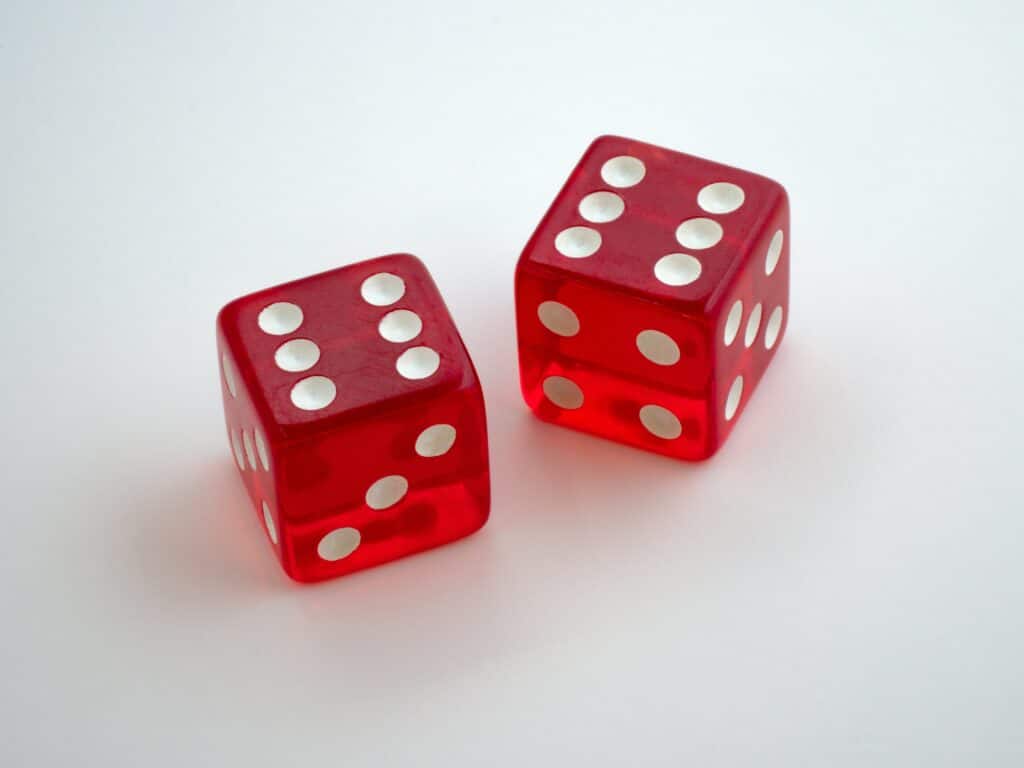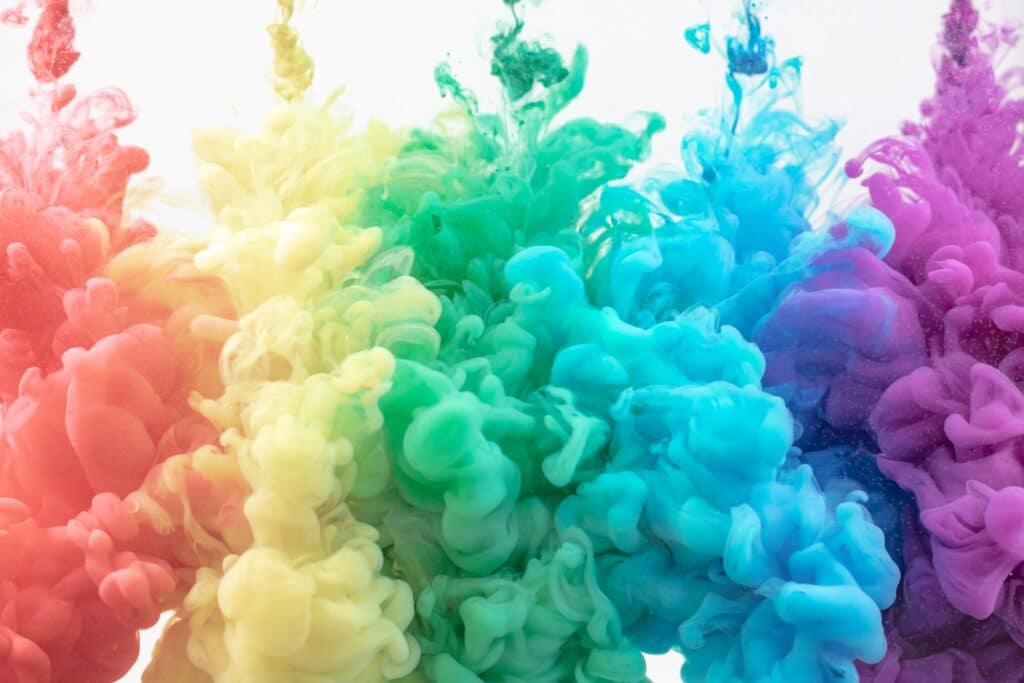If you grew up as a trivia geek, chances are that Trivial Pursuit played a role in that. A mainstay of any family game night, Trivial Pursuit, with its relatively simple gameplay and classic, wheel-shaped board, has stood the test of time. However, the game’s trivia questions can prove tricky for younger players. That’s where Trivial Pursuit Junior comes in.
Sometimes called Trivial Pursuit Kids, Trivial Pursuit Junior was first released in 1987. It offers simpler questions and fun categories to make the game into something a little more child-friendly.
Trivial Pursuit Junior is no longer being produced, so it’s rare. If you’re buying a used game box, it’s not unlikely that it may not come with its original instruction booklet. The instructions are so valuable that you can find them sold as standalone items on resale websites like eBay—pretty steep for a piece of paper if you ask us! That’s where we at Trivia Bliss come in: we’ve compiled the instructions for Trivial Pursuit Junior below so that you can begin gameplay without any confusion and save your cash.
Read on to learn all about Trivial Pursuit Junior and step-by-step instructions to help you plan your game. We’ll tell you how to play it, what makes it different from the original, and whether it’s worth playing.
1. Set Up the Game Board
Before you can begin your game, you must set up the game completely. The first thing you’ll do is open your game box. Inside, you’ll find one game board and four game tokens. 24 colored scoring wedges, a spinner or die (this will differ depending on the edition of the game you purchase!), and an assortment of 200 trivia question-and-answer cards.

Your game box may also contain small wheels in which to house your scoring wedges. If these aren’t included, you most likely have a game board equipped with corner spaces for collecting your wedges and keeping score. Make sure you figure out which score-tracking method your game features before you begin.
To set up, clear off a table or flat surface, so you have room to get ready for gameplay. Then, unfold the cardboard game board. Shuffle the cards and distribute a token to each player. Also, give one scoring wedge of each color to each player, though players should not yet place these wedges in their score-tracking location.
Once you’ve done all of this, you should be ready to get your game going!
It’s important to note that because many of the Trivial Pursuit Junior boxes on the market are used or pre-owned, they may be missing certain pieces or Trivial Pursuit Junior question cards. This doesn’t mean that you can’t enjoy the gameplay, however! You may just have to make do with fewer trivia questions or homemade game tokens or wedges. For example, a piece of colored foam or construction paper cut into a fun shape can serve as a marker for scoring, and a small toy or token from another game can be used for a player to move around the board. Don’t be afraid to get creative—your kiddos will appreciate it.
2. Start Rolling and Get Going
Now, it’s time to start the game. There are a few ways to decide which player will go first. You can choose the youngest player (perhaps the simplest method) or have every participant either spin the spinner or roll the die and choose the kid who’s spun or rolled the highest numerical value. Then, choose a clockwise or counterclockwise direction for the rest of the kids to play in.

After determining which player will go first, the chosen player will get to take a turn! They’ll either roll the die or spin the spinner to decide how many places they’ll move their token around the board. Once this number has been rolled or spun, they will remove their token from the central hub and travel their allotted number of spaces down a spoke and onto the board’s main path. The game has now officially begun!
3. Answer a Trivia Question
In Trivial Pursuit Junior, each game board space has a color corresponding to one of the game’s six categories. These colors indicate which category the active player will answer a question from.

Once the first player moves, they’ll land on a colored space. Another player will pick up a Trivial Pursuit Junior question card and read the card’s question from the category dictated by the space’s color. The first player will answer the question to the best of their abilities. If they get it right, they’ll earn the scoring wedge of the color in question. From there, this player will place their scoring wedge in its appropriate score tracker. Their turn is now complete.
4. Take Turns Travelling Around the Board
Now it’s time for the rest of the players to try their hands at some tricky trivia. Each player will complete turns by following the two previous steps. Go around the circle to maintain fairness amongst all participants.
5. Earn Six Scoring Wedges
As the players take their turns and continue to answer questions correctly, their scoring wedges will begin to accumulate. Each player aims to obtain one scoring wedge or each color as quickly as possible so that they have a large chance of winning the game. It will most likely take more than six turns for a player to do this because it’s unlikely that any player would land on every category consecutively with no repeats. Even so, it would be quite a feat for a young player to answer every trivia question correctly!
Once a player has answered one question from each unique category correctly, they can win the game. But first…
6. Travel Back to the Central Hub
Before a Trivial Pursuit Junior participant can sweep the game, they’ve got to make it back to where they started: the central hub of the board. Once a player has obtained one scoring wedge for every category of the game, it’s time for them to travel their way back around the board and up one of the spokes that leads them to the center spot. Depending on a player’s luck of the die or the spinner, this may take multiple turns. As they make their way back to the hub, they must continue to answer trivia questions corresponding to the spaces they land on.
Now that a player’s token is in the hub, it’s time for one final question.
How Do You Win Trivial Pursuit Junior?
Like most editions of Trivial Pursuit, one wins Trivial Pursuit Junior by making their way to a central part of the game board (often called “the hub”) and answering one final, vital question. Players can only do this after they’ve received a wedge of every color, representing a correct answer for every category in the game.
The category for this final question is chosen randomly by the other players, so it may be hit or miss for the player vying to win. A trivia card is chosen, and another player reads the question aloud. If the player trying to win answers the question correctly, they’ve won the game!

If the question is answered incorrectly, there’s no harm done—this is just a kids’ game, after all! The player is welcome to forfeit or continue playing by answering trivia questions as they travel around the board’s perimeter once again.
A game of Trivial Pursuit Junior continues until one player has answered a final question in the hub. However, with all the trivia knowledge gained during gameplay, every player is a winner!
What Are the Categories in Trivial Pursuit Junior?
We’re all familiar with the original Trivial Pursuit categories: People and Places, Arts and Literature, Entertainment, Sports and Leisure, Science and Nature, and History. However, Trivial Pursuit Junior strays from these classic categories. Instead, the game opts for slightly more kid-friendly categories (i.e., ones that kiddos might actually know the answers to).
Because there have been several editions of Trivial Pursuit Junior, there is some variation in the game’s category titles. For example, in the sixth volume, the game categories are the following: All About Nature, Whatever, Yesterday, Today and Tomorrow, Fun and Games, and Music, Movies, and More.
Another earlier version of the game lists the categories as Every Day, Fun, Stories and Songs, Science, Nature, and Games. While a couple of these categories overlap with the traditional Trivial Pursuit categories (All About Nature pairs with Science, and Music and Movies qualify as Art and Entertainment), there are some wild cards in there that make this game a little less predictable and a little more fun for younger players. All of these categories feature multiple-choice questions regarding subjects that younger kids are familiar with.
In the game’s final edition, the colors of the trivia categories are as follows: All About Nature is pink, Whatever is blue, Yesterday is yellow, Today and Tomorrow is purple, Fun and Games is orange, and Music, Movies, and More is green. Depending on the edition of the game you purchase, these categories may have slightly different colors to signify them (i.e., red or brown instead of pink).

It’s worth noting that because the game is no longer being produced, some questions may seem a little dated. The Today and Tomorrow category may seem especially off the mark, seeing as many of the copies of the game that are on the market were made in the 90s and early 2000s—in other words, they aren’t representative of today and tomorrow anymore! If you think these questions won’t make for a proper challenge for your children, you can remove them from the deck before gameplay begins.
What’s the Difference Between Trivial Pursuit Junior and “Regular” Trivial Pursuit?
We’ve already touched upon some of the differences between Trivial Pursuit Junior and the original version. Still, the main difference between these two is that Trivial Pursuit Junior simplifies the game for younger players. It’s meant to be played by kids and kids only—we recommend it for children ages seven to 12. Sure, an adult could join in, but the questions are kid-appropriate and wouldn’t prove much of a challenge for an older player. Any adult playing Trivial Pursuit Junior is most likely doing so just to humor their kids and not to have a gratifying trivia experience.
Another difference that we mentioned above is that all editions of Trivial Pursuit Junior have different categories than the original game. This change was made to make the game’s trivia questions more relevant to its younger players. While the adult categories are broad enough to have plenty of questions for kids to answer, they just aren’t as kid-friendly; for example, a nine-year-old is less likely to be a history buff than her older teenage sibling or one of her parents. Still, Trivial Pursuit can prove a good challenge for a bright youngster.
Additionally, Trivial Pursuit Junior only comes with four game tokens as opposed to six, as in most other versions of Trivial Pursuit. If more than four kiddos want to play, you can use small household toys as special, extra tokens.
What’s the Difference Between Trivial Pursuit Junior and Trivial Pursuit Family Edition?
If you keep up with Trivia Bliss, you’ll know that we recently covered the instructions for Trivial Pursuit Family Edition. But how does the Junior version measure up against the Family Edition?
For starters, Trivial Pursuit Family Edition contains separate decks of cards for adult players and kid players, with easier questions for the children and harder questions for the grown-ups. This is so entire families can play together, and everyone can be challenged. In Trivial Pursuit Junior, however, there are no adult-level questions. Because of this, the game is ideal for a group of kids to play alone, as opposed to the entire family.
There’s a lot of reading involved in Trivial Pursuit Junior (so many questions and answers!), so if your kids are still learning how to read, they may have trouble playing on their own. In that case, perhaps wait on the Junior version and choose Family Edition so an older player can read off questions and answers for them.
TL;DR, if your kids are having a hands-off playdate with their friends, set them up with Trivial Pursuit Junior, but if you want to play with them, opt for Trivial Pursuit Family Edition.
Final Words
You’ve made it to the end of our guide to Trivial Pursuit Junior. We hope our instructions and helpful hints allow you to have as much fun as possible as you go on your trivia journey.

Want even more Trivial Pursuit? We’ve got plenty of it. If you want to familiarize yourself with other versions of Trivial Pursuit, here’s our list of every version that’s ever been released. Read about the numerous (somewhat failed) attempts to turn Trivial Pursuit into a successful game show here. If you’d prefer to take your Trivial Pursuit gameplay online, we’ve got a guide for that, too. And if you’re NOT playing with kids, why not opt for playing a little strip Trivial Pursuit?
If you have played Trivial Pursuit Junior, what has your experience been like? Did you enjoy it? Do your kids enjoy the game? Let us know all about it in the comments section.


Leave a Reply